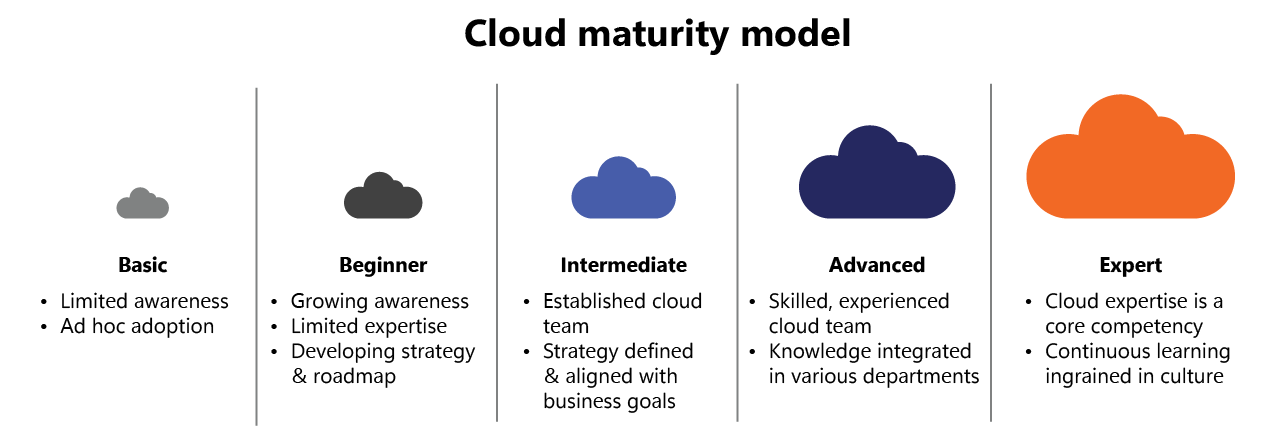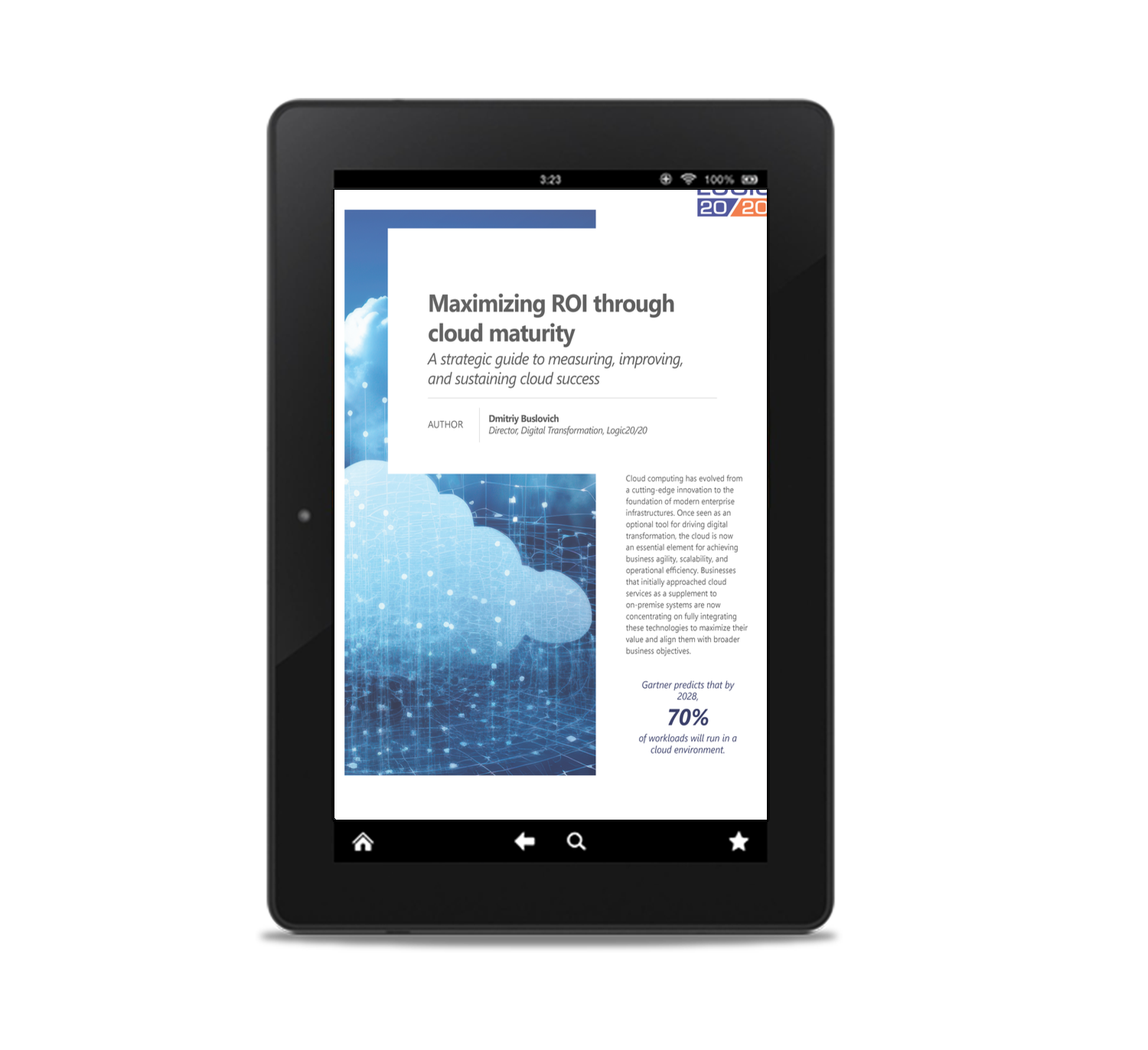Following is an excerpt from our white paper Maximizing ROI through cloud maturity: A strategic guide to measuring, improving, and sustaining cloud success. Click here to download the paper and learn more about advancing your organization’s cloud maturity.
Cloud maturity refers to how effectively an organization has integrated cloud technologies into its operations, aligned these technologies with business goals, and optimized its cloud environment for efficiency, security, and scalability. It’s a measure of how well an organization leverages the cloud to drive business outcomes.
Cloud maturity typically progresses through five stages, each representing a deeper integration and more strategic use of cloud resources:

Stage #1: Basic
The organization has limited awareness of cloud technologies and their potential benefits. Cloud adoption is ad hoc, with no strategy, no dedicated cloud team, and no standardized processes.
Stage #2: Beginner
Awareness of cloud technologies is growing, but expertise is limited. An initial cloud strategy and roadmap may be in development, with some experimentation in cloud services and applications.
Article continues below

Stage #3: Intermediate
A cloud team with specific roles and responsibilities is in place. Cloud strategy is well defined and aligned with business objectives. Pilots and proofs of concept are conducted to evaluate cloud suitability for specific applications and workloads.
Stage #4: Advanced
The business has skilled cloud professionals with experience in managing and optimizing cloud environments. Cloud knowledge is integrated into various departments. The organization has a systematic approach to migrating applications to the cloud, and optimization strategies are in place to ensure cost efficiency and performance.
Stage #5: Expert
Cloud expertise is a core competency, with continuous learning and improvement ingrained in the company culture. Cloud-native applications are being developed as I.T. embraces microservices and DevOps practices. Continuous integration and delivery pipelines are standard.
Understanding where the organization falls on this spectrum is crucial for identifying the steps needed to advance to the next level. Evaluating cloud maturity enables organizations to develop targeted strategies that enhance cloud environments, align with business goals, and maximize ROI.

